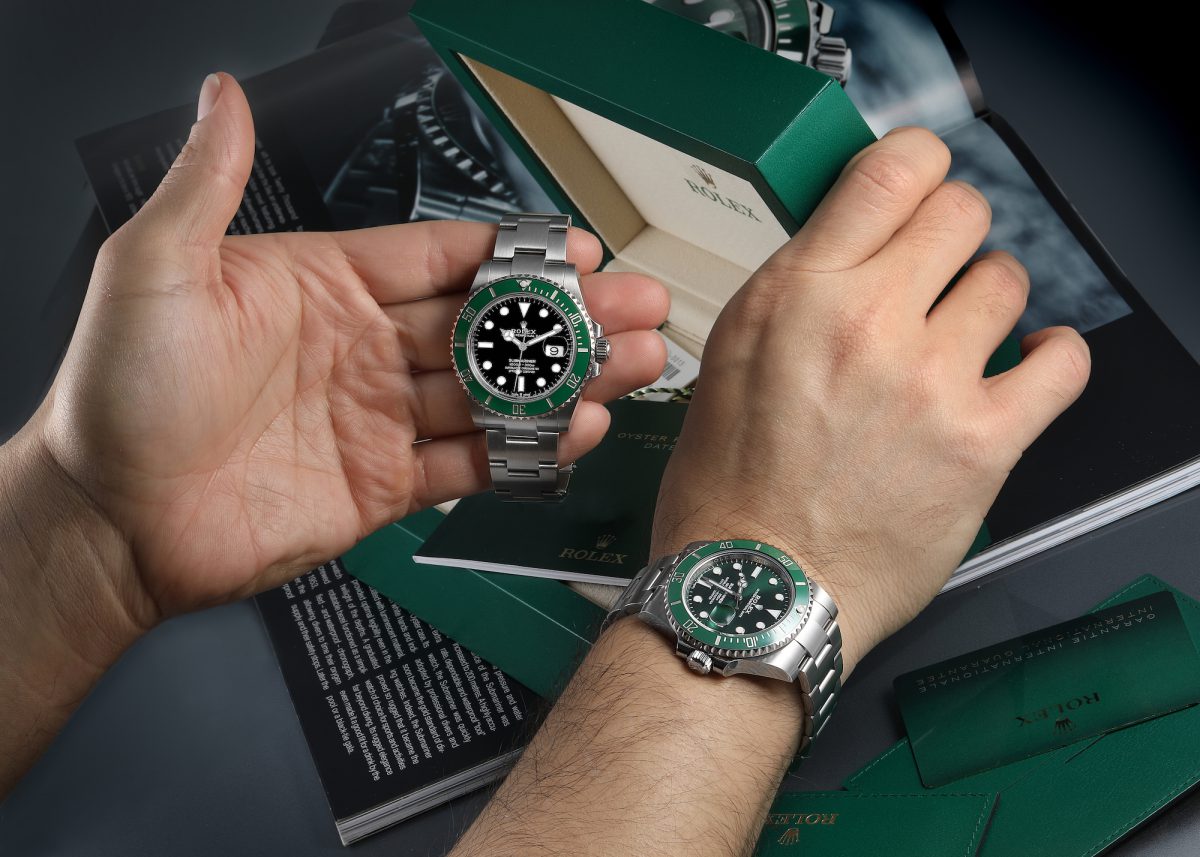The luxury watch market faces an unprecedented challenge as sophisticated counterfeit Rolex timepieces flood both online and physical marketplaces. Furthermore, authentication has become crucial for protecting investments that can range from $6,000 to over $100,000. Moreover, recent data reveals that Rolex copies account for approximately half of all counterfeit luxury watches, with some fakes achieving such quality that only 20% can be identified as counterfeits. Consequently, understanding how to authenticate a Rolex has never been more essential for collectors, buyers, and enthusiasts in the United States market.
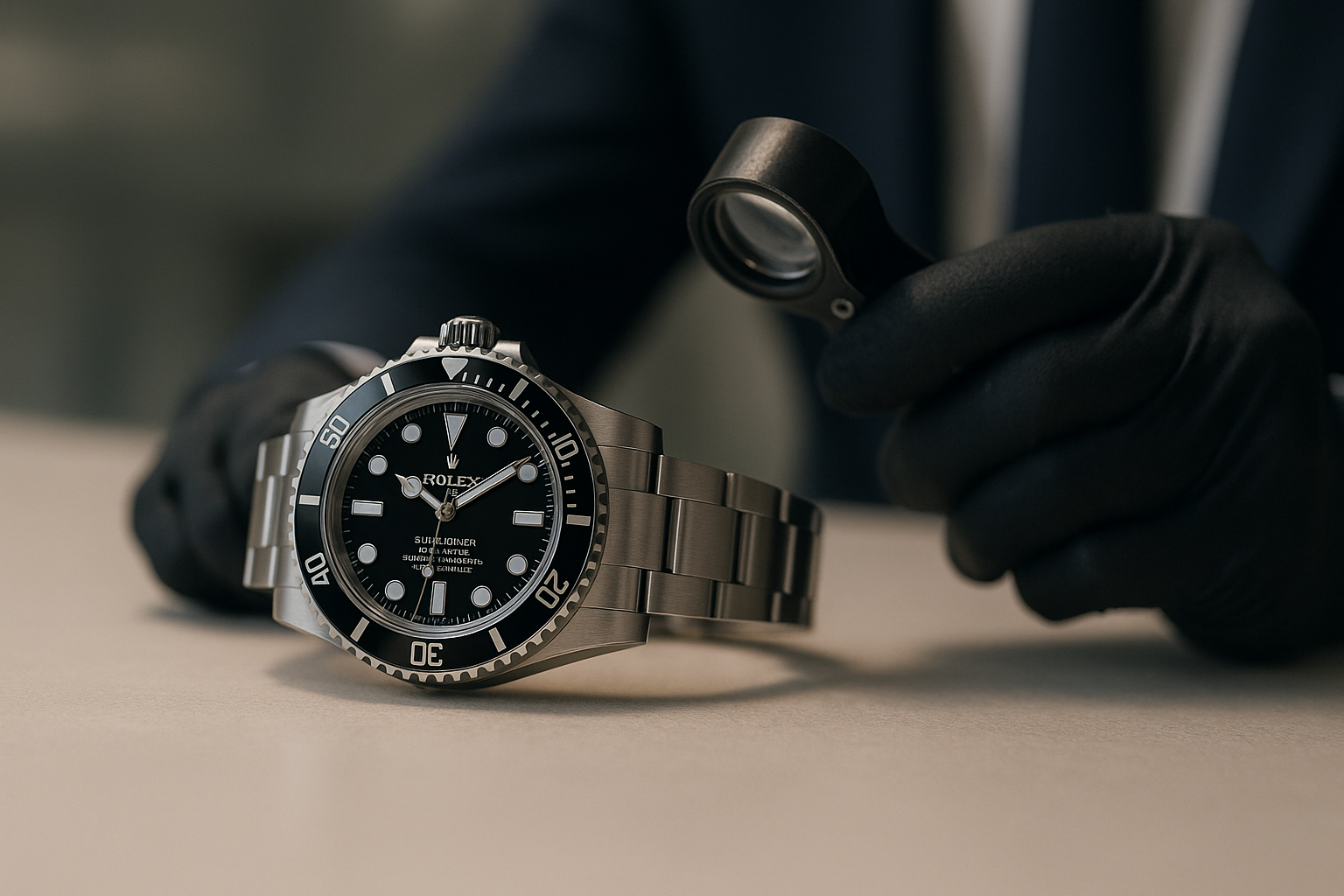
Why Rolex Watches Are Prime Targets for Counterfeiters
Brand Prestige Drives Counterfeiting Demand
Rolex’s unparalleled reputation for precision, luxury, and status makes it the most ambitious and sought-after luxury watch brand globally. Therefore, counterfeiters recognize the substantial profit potential in replicating these iconic timepieces. Additionally, the brand’s consistent value retention and widespread recognition create a perfect storm for criminal enterprises seeking maximum returns.
Resale Value Creates Financial Incentive
The secondary market for authentic Rolex watches represents an estimated $20 billion industry, providing counterfeiters with enormous financial motivation. Similarly, genuine Rolex timepieces maintain exceptional resale value, often appreciating over time. However, this creates significant risk for buyers who unknowingly purchase counterfeits and suffer substantial financial losses.
Technological Advances Aid Sophisticated Fakes
Modern counterfeiting operations utilize advanced technologies including optical scanning and 3D printing to create “super clones” that closely mimic authentic designs. Nevertheless, these sophisticated fakes still fail under professional scrutiny. Furthermore, the luxury watch authentication market has responded by developing more thorough verification processes to combat these advanced counterfeits.
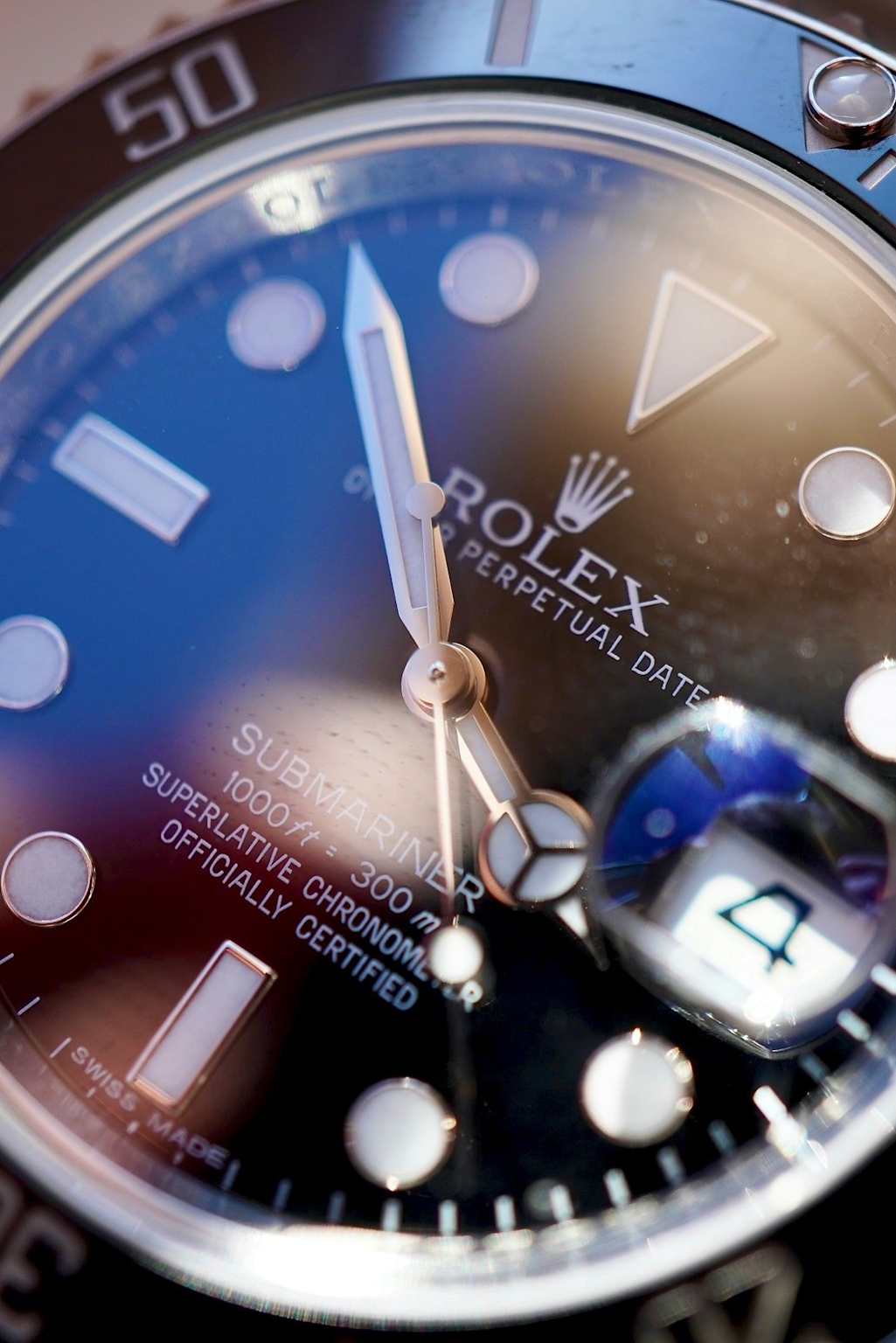
Initial Visual Inspection: First Line of Defense
Examining Case Quality and Construction
Authentic Rolex watches demonstrate superior build quality through their substantial weight and robust construction. Moreover, genuine timepieces utilize 904L stainless steel or precious metals, creating a distinctive heft that counterfeits cannot replicate. Additionally, the case finishing should display consistent polishing and precise angles throughout all surfaces.
Dial Printing and Font Analysis
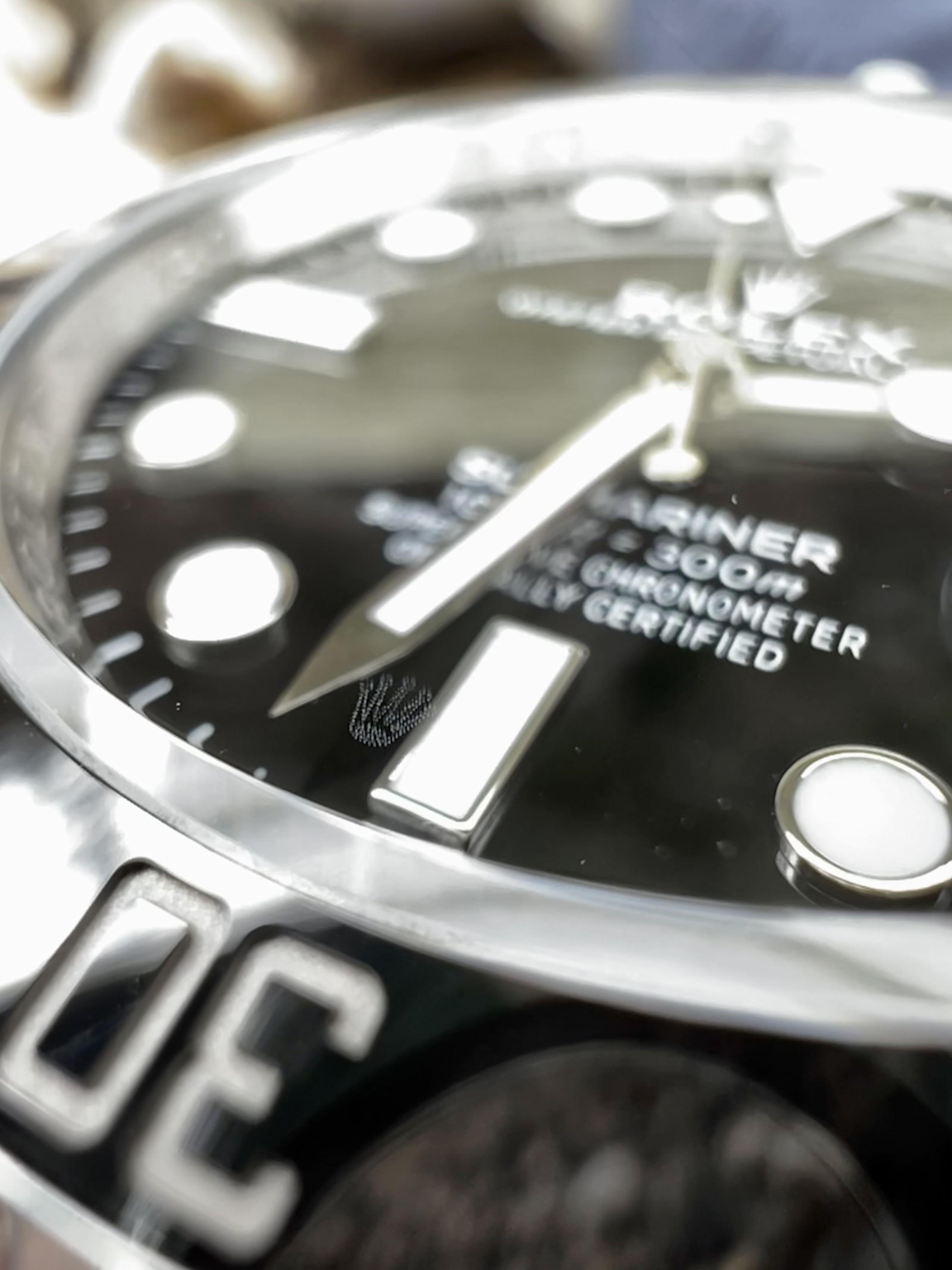
The dial represents one of the most revealing areas for authentication. Therefore, examine the Rolex crown logo at 12 o’clock for razor-sharp definition and perfect alignment. Furthermore, text printing should appear crisp without fuzzy edges or raised lettering. Additionally, verify that phrases like “Oyster Perpetual” and “Superlative Chronometer” display proper spacing and correct spelling.
Hand Shapes and Lume Application
Genuine Rolex hands feature precise manufacturing with smooth angles and consistent finishing. Similarly, lume application should appear even across all hour markers and hands. Moreover, authentic Rolex lume glows brightly after light exposure, whereas counterfeit versions often display inconsistent or weak luminescence.
Serial and Model Numbers: Unique Identifiers
Location and Engraving Characteristics
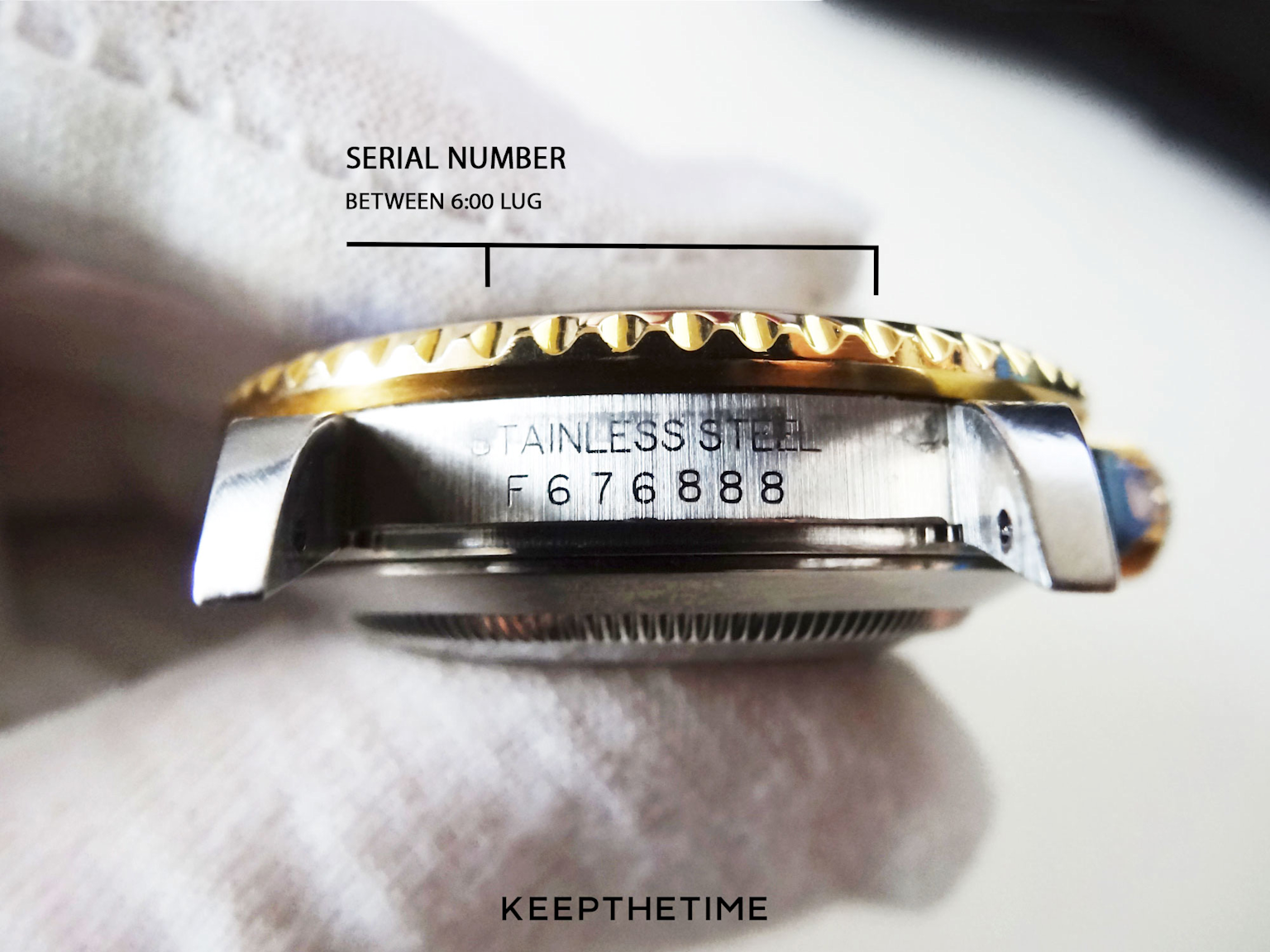
Rolex engraves unique serial and model numbers between the lugs at the 6 and 12 o’clock positions respectively. However, accessing these numbers typically requires bracelet removal, which should be performed by professionals. Furthermore, authentic engravings display deep, crisp precision with consistent depth throughout each character.
Serial Number Evolution and Verification
Rolex serial numbers evolved from numeric sequences to letter prefixes before 2010, after which the company implemented randomized alphanumeric combinations. Therefore, understanding the correct format for specific production periods helps identify obvious fakes. Additionally, counterfeiters often duplicate serial numbers across multiple watches, making database checks valuable.
Professional Database Verification
While Rolex maintains no public serial number database, authorized dealers and service centers can verify authenticity through internal systems. Moreover, services like The Watch Register help identify stolen timepieces by cross-referencing serial numbers against their database. However, buyers should remember that authentic serial numbers can appear on counterfeit watches, making physical inspection essential.
Movement Inspection: The Heart of Authentication
Identifying Genuine Rolex Calibers
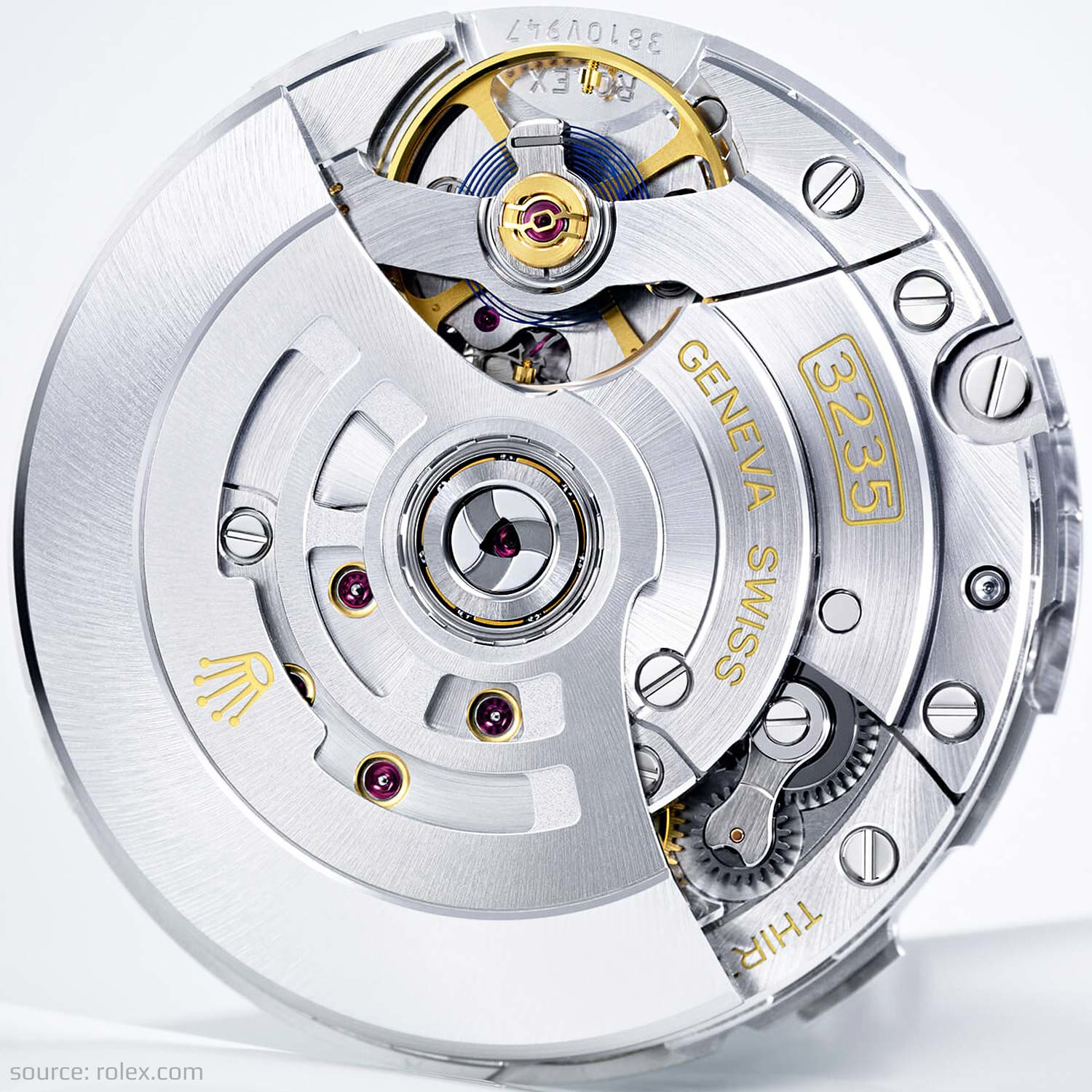
Authentic Rolex movements showcase exceptional finishing quality with golden engravings, satin-finished bridges, and precise component alignment. Furthermore, genuine calibers display the Rolex name prominently engraved on the movement itself. Additionally, authentic movements feature specific characteristics like free-sprung balance wheels with weighted screws rather than regulation arms.
Modern Caliber Recognition
Current Rolex movements include the 3235 series with Chronergy escapement technology, providing 70-hour power reserves. Similarly, the 4130 caliber powers Daytona models with vertical clutch systems. Moreover, the newest 7135 caliber introduced in 2025 features high-frequency operation at 10 beats per second with innovative Dynapulse escapement technology.
Movement Quality Assessment
Genuine Rolex movements operate with smooth, sweeping second hands due to their mechanical construction. However, most counterfeits utilize quartz movements causing obvious ticking motions. Therefore, listening closely reveals authentic movements produce minimal sound, while fakes often tick audibly.
Weight and Materials: Tangible Authenticity
Material Quality and Heft
Authentic Rolex watches feel substantially heavier than counterfeits due to their use of premium metals like 904L stainless steel. Furthermore, the weight distribution should feel balanced and solid in hand. Additionally, cheaper materials used in counterfeits result in noticeably lighter timepieces that feel hollow or flimsy.
Bracelet and Clasp Construction
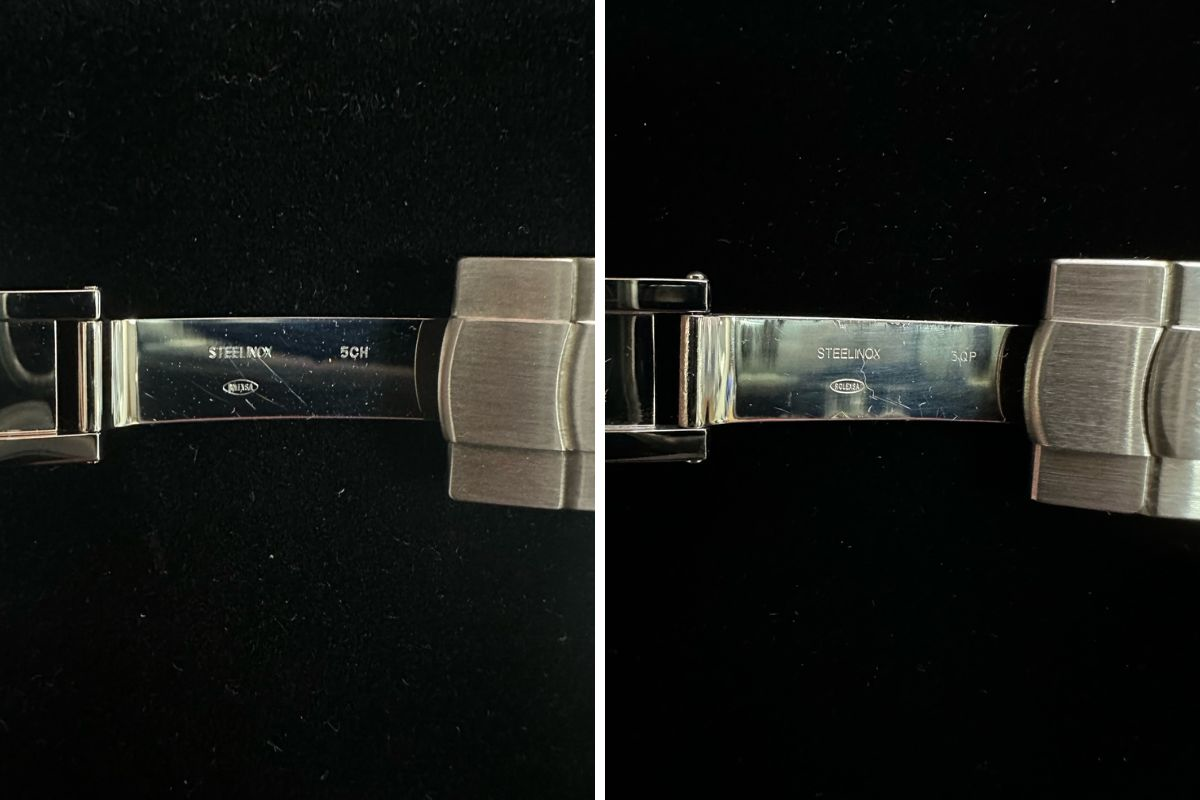
Genuine Rolex bracelets feature solid links with polished edges and precise engineering throughout their construction. Moreover, authentic clasps snap firmly with engraved coronet logos displaying sharp definition. Additionally, the bracelet should integrate perfectly with the case lugs without gaps or misalignment.
Crown and Pusher Details
The winding crown should feature fluted design with deeply engraved Rolex coronet logo at its center. Furthermore, recent models include two to three dots or bars beneath the coronet marking. Additionally, crown operation should feel smooth and precise during winding and time-setting procedures.
Security Features: Advanced Anti-Counterfeiting
Laser-Etched Crown Logo
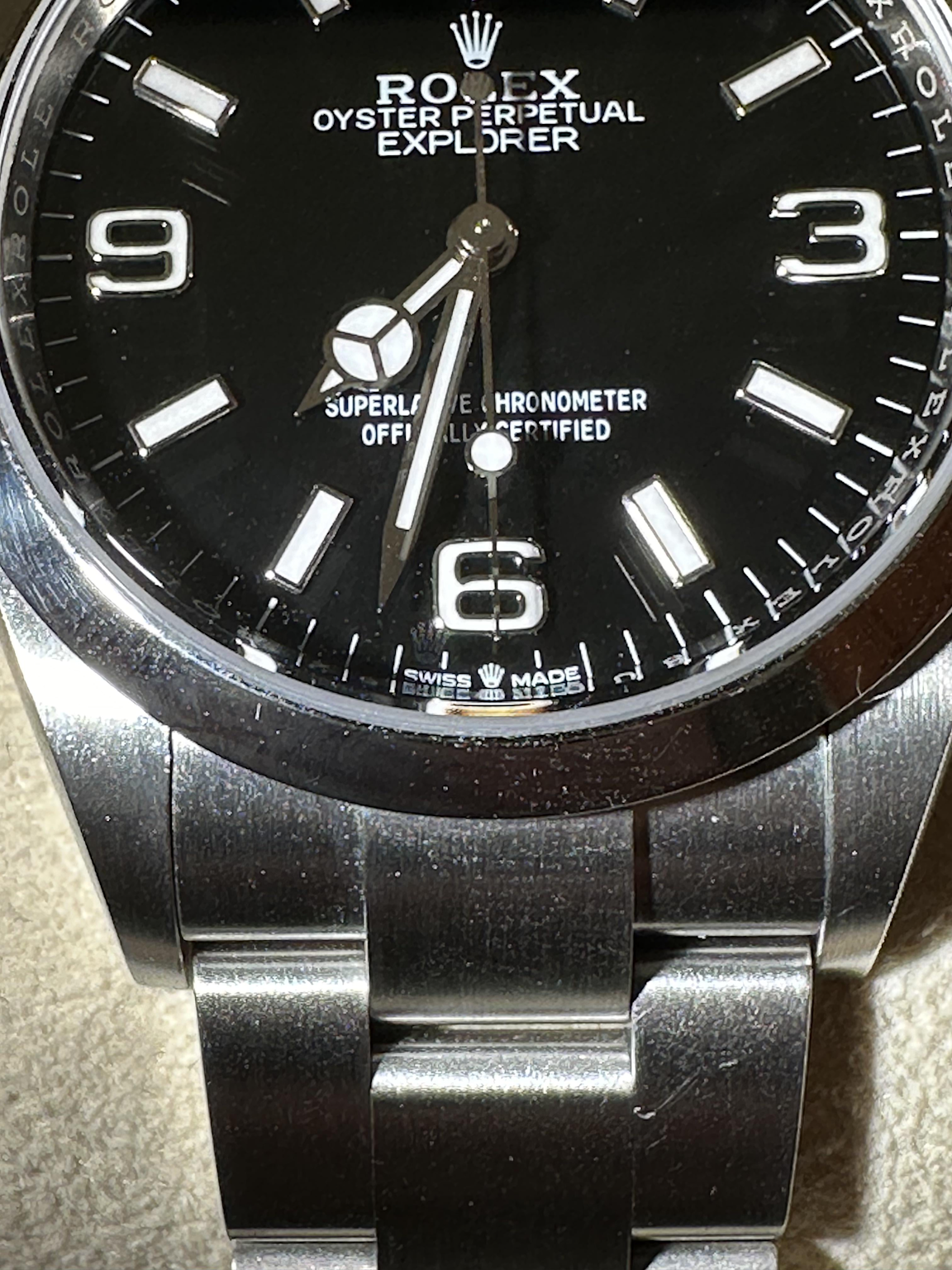
Since 2002, Rolex incorporates a tiny laser-etched crown logo at the 6 o’clock position on sapphire crystals. However, this micro-etching remains nearly invisible to naked eyes, requiring magnification and proper lighting for detection. Furthermore, counterfeiters struggle to replicate this security feature accurately, often producing thicker or more visible etchings.
Cyclops Lens Magnification
Rolex date windows feature cyclops lenses providing 2.5x magnification for enhanced readability. Therefore, authentic lenses make dates appear large and clear when viewed straight-on. Additionally, genuine cyclops lenses create a noticeable bump on the crystal surface that can be felt when touched.
Rehaut Engraving Patterns
Models manufactured after 2005 feature “ROLEX ROLEX ROLEX” text engraved around the inner bezel (rehaut). Moreover, this pattern includes the crown logo at 12 o’clock and serial number at 6 o’clock positions. Furthermore, authentic rehaut engravings display specific alignment patterns where “R” aligns with five-minute markers on the left side, while “X” aligns on the right side.
Documentation and Provenance Verification
Original Box and Papers Authentication
Complete Rolex sets include warranty cards, chronometer certificates, and instruction manuals with matching serial numbers. Furthermore, warranty cards should feature dealer stamps and proper formatting consistent with production periods. Additionally, complete documentation can increase resale value by 10-30 percent.
Certificate Authenticity Assessment
Genuine Rolex paperwork utilizes high-quality materials with precise printing and consistent formatting. Moreover, warranty cards must match the watch’s serial number exactly. However, buyers should remember that counterfeiters can replicate documentation, making physical watch inspection paramount.
Purchase History and Provenance
Establishing clear ownership history through receipts, service records, and previous documentation strengthens authenticity verification. Similarly, watches with continuous service histories from authorized dealers provide additional confidence. Therefore, complete provenance documentation supports both authentication and insurance claims.
Professional Authentication Services
Authorized Service Centers
Official Rolex Service Centers provide definitive authentication through comprehensive inspection processes costing approximately $150. Furthermore, these centers issue authentication papers within 7-10 days of inspection completion. Additionally, only Rolex Service Centers can definitively confirm authenticity through internal database access.
Certified Watchmakers and Dealers
Professional authentication services offer comprehensive inspections including movement verification, case examination, and condition assessment. Moreover, certified watchmakers possess specialized tools and expertise for detecting sophisticated counterfeits. Furthermore, reputable services like WPB Watch Co. provide multi-point authentication processes with detailed reporting.
Online Authentication Platforms
Modern authentication services like LegitApp and Real Authentication utilize AI-assisted analysis combined with expert review. However, these services require high-quality photographs following specific guidelines. Additionally, turnaround times range from 10 minutes to several hours depending on service level selected.
Red Flags and Warning Signs
Common Counterfeiting Mistakes
Counterfeit Rolex watches frequently display shallow or uneven serial number engravings. Furthermore, missing or poorly executed security features like laser-etched crowns indicate fakes. Additionally, incorrect fonts, misaligned text, or spelling errors represent obvious authentication failures.
Suspicious Seller Behaviors
Sellers refusing professional authentication or pressuring quick sales should raise immediate concerns. Moreover, deals significantly below market value often indicate counterfeit merchandise. Furthermore, lack of proper documentation or mismatched serial numbers warrant extreme caution.
Marketplace Considerations
Online marketplaces show concerning statistics with approximately 30% of luxury watches sold being counterfeit. Therefore, buying from unauthorized sources significantly increases counterfeiting risk. Additionally, social media platforms have become popular venues for counterfeit sales.
Conclusion
Successfully authenticating a Rolex requires vigilant attention to multiple verification points combined with professional expertise when uncertainty exists. Moreover, the evolving sophistication of counterfeit operations demands increasingly thorough authentication processes. Furthermore, working with reputable dealers, authorized service centers, and certified professionals provides the strongest protection against counterfeit purchases.
Therefore, potential buyers should prioritize authentication over price considerations when investing in pre-owned Rolex timepieces. Additionally, maintaining proper documentation and establishing clear provenance supports both current ownership and future resale opportunities. Ultimately, the peace of mind achieved through proper authentication justifies the additional time and expense required for thorough verification processes.
